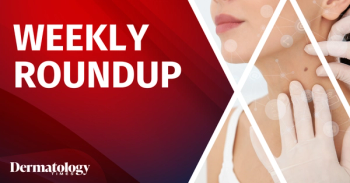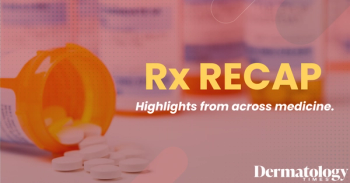
POLL: Which Cosmeceuticals Are Most Popular, According to Social Media?
Key Takeaways
- Retinol emerged as the most popular cosmeceutical on TikTok and Google, with significant search volume increases during the COVID-19 pandemic.
- The study used Google Trends data from 2004 to 2023, showing a twofold increase in cosmeceutical searches from 2020 to 2021.
Google search trends and TikTok view counts were used to analyze the public popularity of cosmeceutical ingredients like retinol, hyaluronic acid, and niacinamide.
A recent study reviewed cosmeceutical trends on social media and discovered that retinol is the most searched cosmeceutical on several platforms.1 Investigators used analytics from TikTok and Google Trends. It is estimated that between 45% and 50% of adults turn to social media for skin care advice.2
The authors conducted a Google Trends search from January 2004 to December 2023 in the United States. Trend lines were created for terms like retinol, bakuchiol, salicylic acid, glycolic acid, azelaic acid, hydroquinone, niacinamide, vitamin C serum, and hyaluronic acid. Then, the yearly perfect differences in relative search volume index (SVI) were calculated. The SVI is the ratio of the frequency a term is searched within a specific time relative to peak search volume during that time frame. An SVI of 100 is the peak popularity of the term. These trends were then graphed on scatterplots and compared to the total number of TikTok views for each search term.
The largest twofold increase in cosmeceutical search volume occurred from 2020 to 2021, due to the COVID-19 pandemic. Here, the average SVI doubled or tripled, with some increasing by 40% or more. Between 2022 and 2023, search volume rose by over 18%. This search interest in trends will continue to increase over time, according to the data.
Retinol was the most popular on both platforms followed by hyaluronic acid, salicylic acid, glycolic acid, vitamin C, niacinamide, hydroquinone, and azelaic acid. Retinol had an interest rank of 1 based on both Google SVI and TikTok views, the highest of all the cosmeceuticals. Bakuchiol was the least popular search term. Interestingly, niacinamide had much more TikTok views than Google searches. Conversely, salicylic acid had a higher Google SVI and a lower amount of TikTok viewership.
“Although not perfectly aligned, these data results collectively reveal that cosmeceutical appeal is constantly increasing, and that interest correlates with consumer viewership on social media,” the authors wrote.
The data may not accurately characterize all of the public interest due to some study limitations, including the lack of Internet access for older populations or those with lower socioeconomic status. Additionally, although Google Trends can be localized to certain geographic regions, TikTok cannot. Future literature could further evaluate specific demographics.
These results emphasize patients’ public interest in skin care, specifically with cosmeceuticals. Clinicians are advised to stay informed on popular social media trends so that they can educate their patients on product usage and combat misinformation.
“Awareness of skincare trends and growth in cosmeceutical interest empower dermatologists to anticipate patient inquiries and develop targeted education on product efficacy, cost effectiveness, and potential adverse reactions,” the authors wrote.
In your recent experience, which cosmeceuticals have seen the most significant increase in patient interest due to social media?
Let us know your thoughts and experiences by answering our poll above and commenting on social media, or by writing to us at
References
1. Correia E, Mandel J, Cullison SRJ. Analyzing Social Media Trends in Cosmeceuticals: Insights From Google Trends and TikTok Analytics. J Cosmet Dermatol. 2025;24(4):e70172. doi:10.1111/jocd.70172
2. Yousaf A, Hagen R, Delaney E, Davis S, Zinn Z. The influence of social media on acne treatment: A cross-sectional survey. Pediatr Dermatol. 2020;37(2):301-304. doi:10.1111/pde.14091
Newsletter
Like what you’re reading? Subscribe to Dermatology Times for weekly updates on therapies, innovations, and real-world practice tips.


















